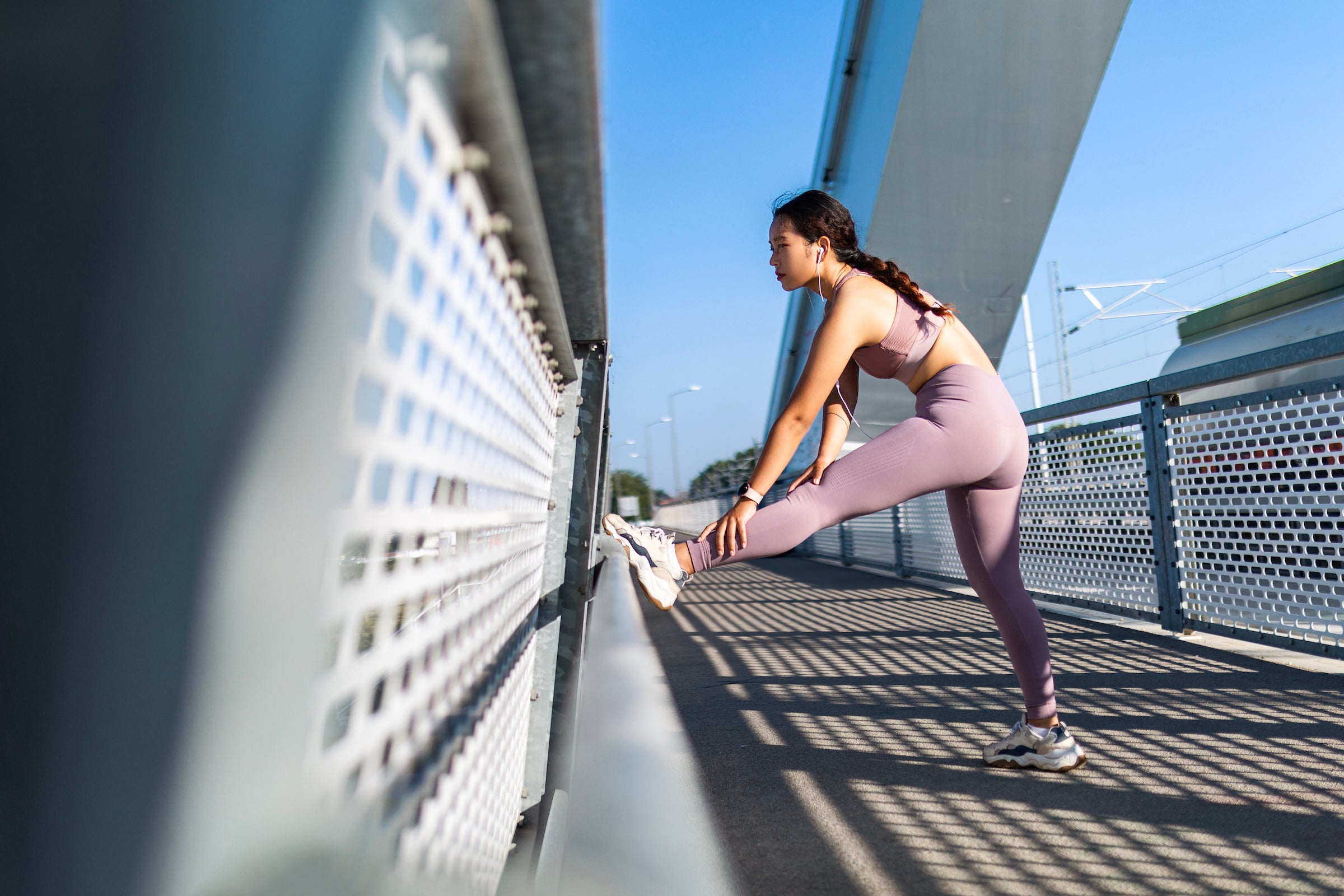Here's Why Your Hamstrings are Always Tight

Girl stretching before running (Photo: Getty Images)
The hamstrings, a group of tendons and muscles that make up the back part of your thigh, are more important than you may think. The hamstring muscles are most engaged as your lead leg swings farther forward and your stance leg pushes off, controlling the knee and hip extension. You probably don’t need to be convinced how important controlling your knees and hips are in running. And in order to protect those parts of the kinetic chain, it’s crucial your hamstrings are limber and not too tight.
While it might feel like a unique experience to you as a runner, tight hamstrings are actually pretty common. Alice Holland, DPT, says she sees it often in gymnasts, dancers, and racquet sport athletes, but also in office workers and seniors who sit a lot.
Lisa Corsello, founder of Burn, a hybrid fitness group that combines Pilates, strength training, and HIIT, agrees that tight hamstrings are among the most common ailments she sees at her studios.
Despite how common it is, it can be hard to fix on your own. “Where we experience tightness or pain isn’t necessarily where it originates,” says Corsello. Commonly, what we refer to as tightness across the back of the legs has very little to do with the backs of the legs.
What Causes Hamstrings to Get Tight?
Holland explains that the largest reason why runners have tight hamstrings has to do with the load we put on the muscle. “The hamstring switches from an eccentric (lengthening contraction) controller in terminal swing of the running gait cycle to a concentric (shortening contraction) controller during propulsion in the stance phase of the leg,” she says. And endurance runners repeat that cycle thousands of times over a long distance. “You’ve got a recipe for injury,” she says.
She also adds that sprinters are not immune, with their forceful contraction magnified with even more force and power.
For people who also do a lot of sitting outside of running, it’s easy for the muscle to become short and therefore prone to injury.
Certified personal trainer Anna Renderer explains that when the hamstrings aren’t experiencing a full range of motion, they become shortened. Without this full range of motion in the hamstrings, there’s a “reciprocal effect of tight hip flexors” which affect your calves and hamstrings. When your hip flexors are tight, it causes a pelvic tilt that causes tightness in the lower back, and a tight lower back often results in tight hamstrings.
Consulting with a PT, they can better look at the full picture to understand what’s causing your tightness. It could be that the glutes are weak, causing the hamstrings to overwork.
Poor pelvic position from weak abs also puts unnecessary strain on the hamstrings, causing many women to experience a feeling of “tight” hamstrings that refuse to loosen up.
How to Treat and Prevent Tight Hamstrings
In her practice Holland uses a combination of soft tissue work and strengthening.
“Muscles get tight when a load is placed on them that they are not able to take,” says Holland. But that can be controlled by strengthening the muscle at its maximal range of work. In this case, she says, that would be the knee in almost full extension to 20 degrees of knee bend.
Hamstring pain can be alleviated by stretches that target not only the hamstrings, “but the psoas, hips, lower back, glutes, and calves” as well, says Corsello.
RELATED: Your Guide to Fixing Tight Hamstrings
At the end of the day, some “tightness” (a misnomer in some cases, says Holland) is sort of normal and no need to worry. “If your hamstrings are tight, but you do not experience any pain in life or in running, then you are likely fine to run without deleterious effects,” she says. Being inflexible is not necessarily considered unhealthy for runners. “However, if you are experiencing pain, discomfort, change in gait (like a limp) due to tight hamstrings, then take the pain as a warning sign that you have pushed your muscles to a point that they cannot handle.” Seeing a PT or other specialist is the best bet to diagnose the problem and prevent further injuries.
In general, Holland recommends that runners practice balance in their training. “Doing everything in moderation is key to a healthy body.” What balance looks like to her:
- Mix resistance training, balance exercises, yoga/stretching into your running routine.
- Avoiding sitting for long periods of time, especially after a long run.
- Strengthen your core via pilates, barre, or resistance training.
- Stay hydrated.
- Don’t overtrain.
- Listen to your body and give it a break when it needs it. “Recovery is just as important as activity.”